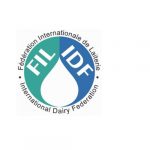
The FAO Food Index was tempered in June thanks to decreases in price quotations for cereal, but other food commodity prices, including for dairy, continued to climb.
The biggest decreases in international quotations were in cereals, with the Cereal Price Index 3% down month on month driven by improved production prospects in major exporting countries.

FAO notes that 2024 has seen the highest global cereal output since tracking began, and has updated its global production forecast at 2,854 million tons – a new all-time-high.
The raised projections have been attributed to a better harvest outlook for maize in Argentina and Brazil as well as Turkey and Ukraine. Wheat projections have also been raised based on better prospects in Pakistan, which is expected to outpace Russia.
This decrease in the FAO Food Index was offset however by rises in quotations for vegetable oil, sugar and dairy, with meat remaining flat.
International price quotations for vegetable oil increased the fastest, the index up 3.1% from May as global import demand, particularly from the biofuel sector, improved.
The sugar price index, which was down for three months in a row, was the second fastest-growing at 1.9%, propped up by concerns about the impact of adverse weather conditions in Brazil and India.
International price quotations for dairy products also rose, the FAO dairy price index up 1.2% with butter rising to a 24-month high on the back of increased global demand for near-term deliveries and strong retail sales.
At the same time, lower milk production in Western Europe and low inventories in Oceania are the main drivers of this demand.
lobal whole milk powder (WMP) prices increased in June due to import demand and seasonally lighter milk production in Oceania. Skim milk powder prices also increased, reflecting steady imports from Eastern Asia and high internal sales in Western Europe.
A slowdown in import demand for near-term deliveries caused cheese prices to marginally decrease, FAO notes.
You can now read the most important #news on #eDairyNews #Whatsapp channels!!!
🇺🇸 eDairy News INGLÊS: https://whatsapp.com/channel/0029VaKsjzGDTkJyIN6hcP1K

























